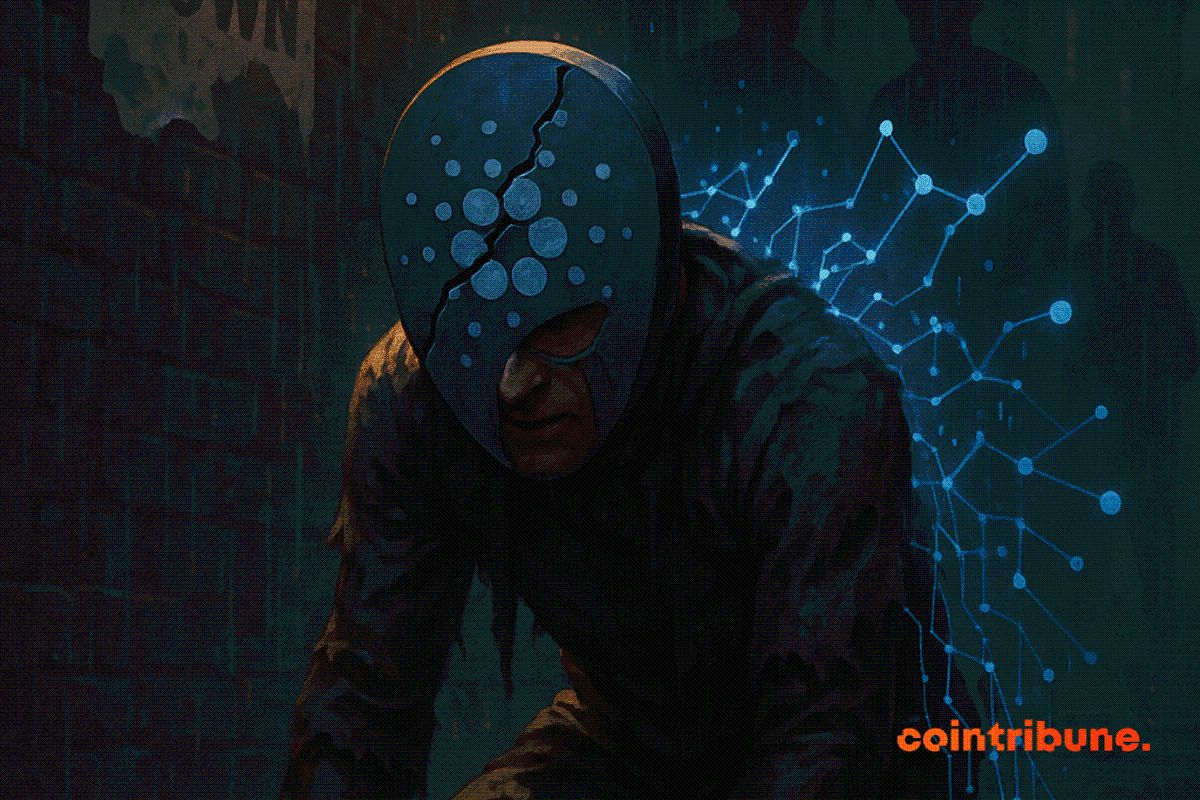Written by: Stacy Muur
Translated by: Luffy, Foresight News
After the frenzy of 2017, the market has finally made a comeback, but its operating mechanism is completely different from the chaotic Gas wars of the past. This is not a nostalgic journey, but a fundamentally restructured market, shaped by new infrastructure, more refined allocation designs, and a clearer regulatory framework.
In 2017, anyone could raise millions of dollars within minutes as long as they had an Ethereum contract and a whitepaper. There were no standardized compliance processes, no structured allocation models, and no post-sale liquidity frameworks. Most investors entered blindly, and many watched their tokens plummet shortly after listing. As regulators stepped in, token sales gradually faded out in the following years, replaced by venture capital rounds, SAFTs (Simple Agreement for Future Tokens), exchange IEOs (Initial Exchange Offerings), and later, retroactive airdrops.
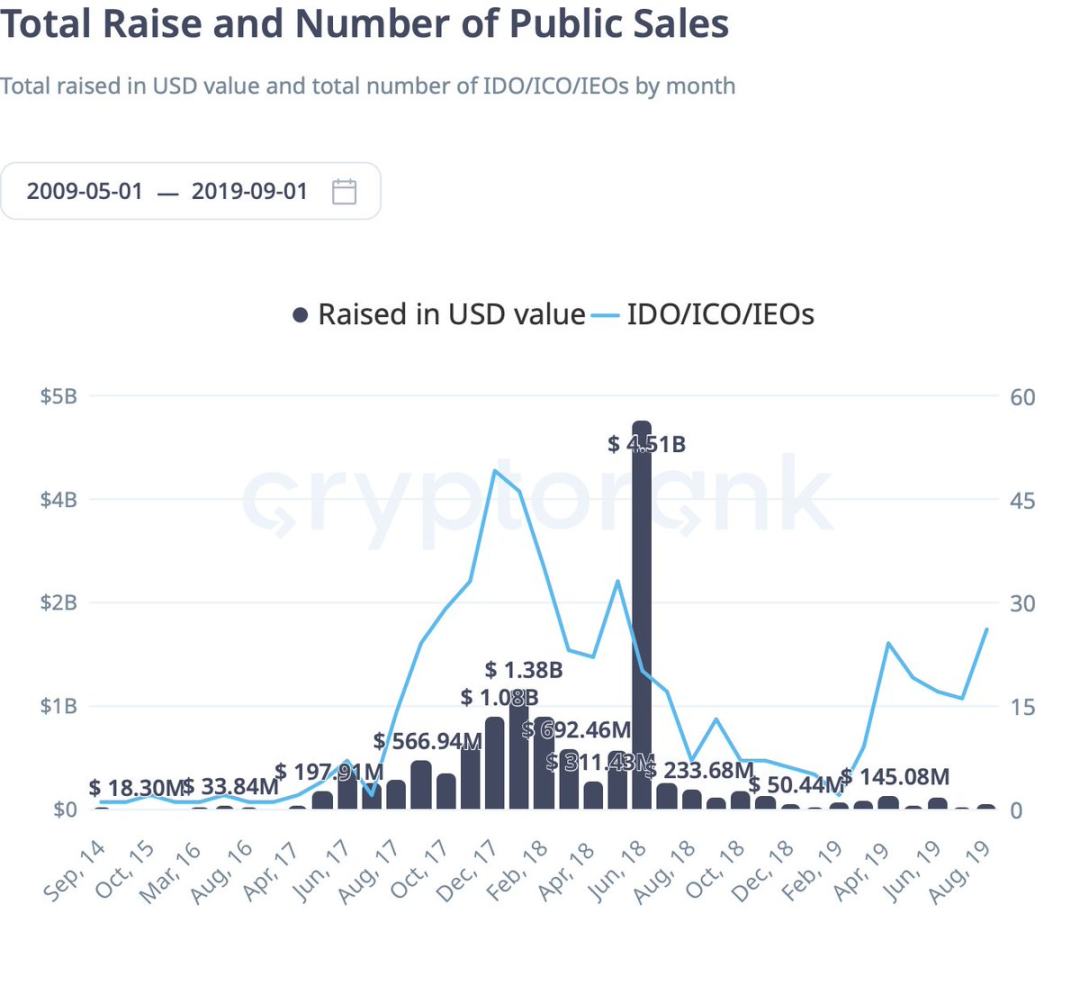
Now, in 2025, the trend has reversed.
But the change is not that projects are launching at lower valuations; in fact, fully diluted valuations (FDV) are higher than ever. The real change lies in the access mechanism.
Launchpads no longer rely on pure speed competitions or Gas wars. Instead, they screen participants through KYC (Know Your Customer), reputation scores, or social influence, and then distribute allocations to thousands of participants in small quotas rather than giving large allocations to whales.
For example, on the Buidlpad platform, I committed $5,000 to Falcon Finance but ultimately received only a $270 allocation, with the remaining funds refunded due to oversubscription. The same happened with Sahara AI—I committed $5,000 and received only a $600 allocation.
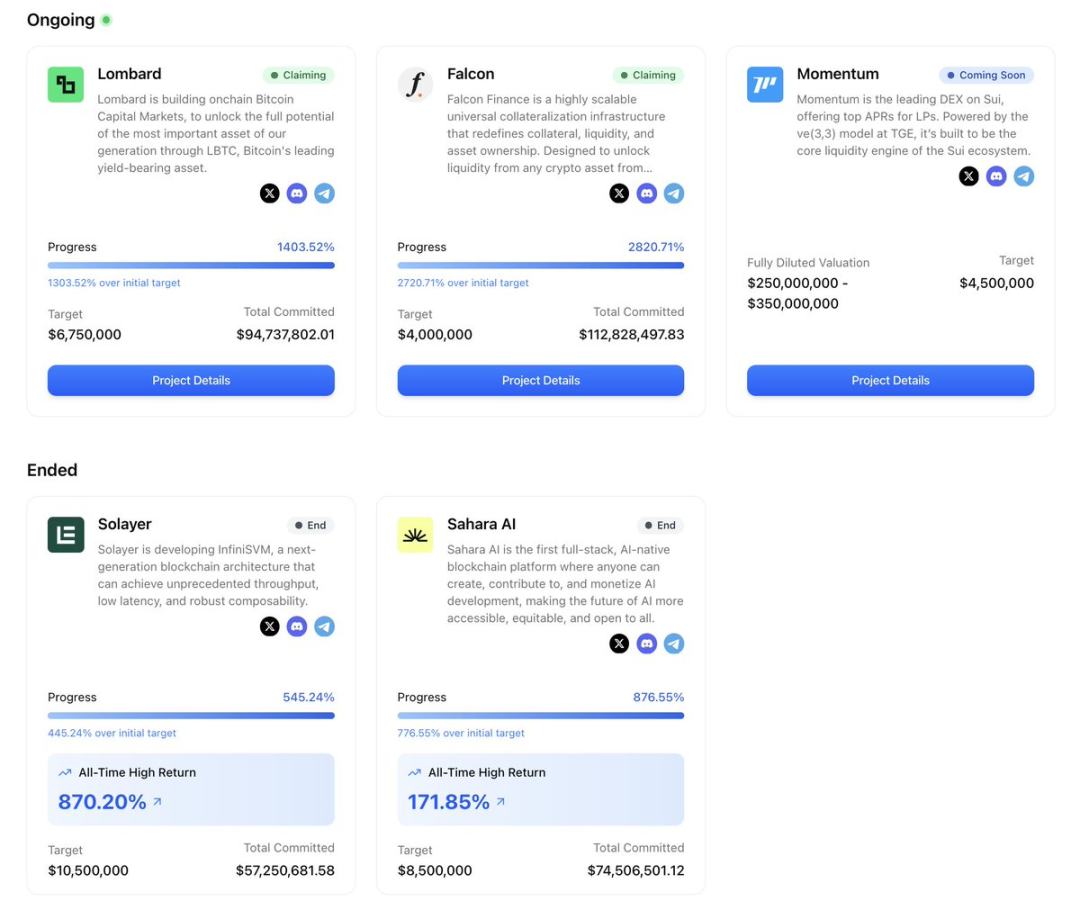
Oversubscription does not lower the price; it only reduces individual allocations, maintaining high FDV while achieving broader token distribution.
Regulation has also kept pace. Now, frameworks like the EU's MiCA (Markets in Crypto-Assets Regulation) provide a clear path for compliant retail investors to participate, and issuance platforms have simplified KYC, geofencing, and eligibility checks into simple configuration switches.
On the liquidity front, some platforms go further by encoding post-sale policies directly into smart contracts, automatically injecting funds into liquidity pools, or stabilizing early trading prices through mechanisms that buy below or sell above certain price ranges.
By 2025, these platforms account for about one-fifth of all token sale trading volume, whereas two years ago, their share was negligible.
This revival is not driven by a single platform, but by a new generation of issuance systems, each addressing different pain points:
-
Echo's Sonar tool supports self-custody, cross-chain sales with switchable compliance modes;
-
Legion collaborates with Kraken Launch to integrate reputation-based allocation mechanisms into exchange processes;
-
MetaDAO builds treasury control and liquidity range functions into the launch phase;
-
Buidlpad focuses on KYC access, community-first distribution models, and offers structured refund mechanisms.
Together, these platforms are transforming the market from a chaotic fundraising tool into a carefully designed market structure, with participation methods, pricing, and liquidity all planned rather than improvised.
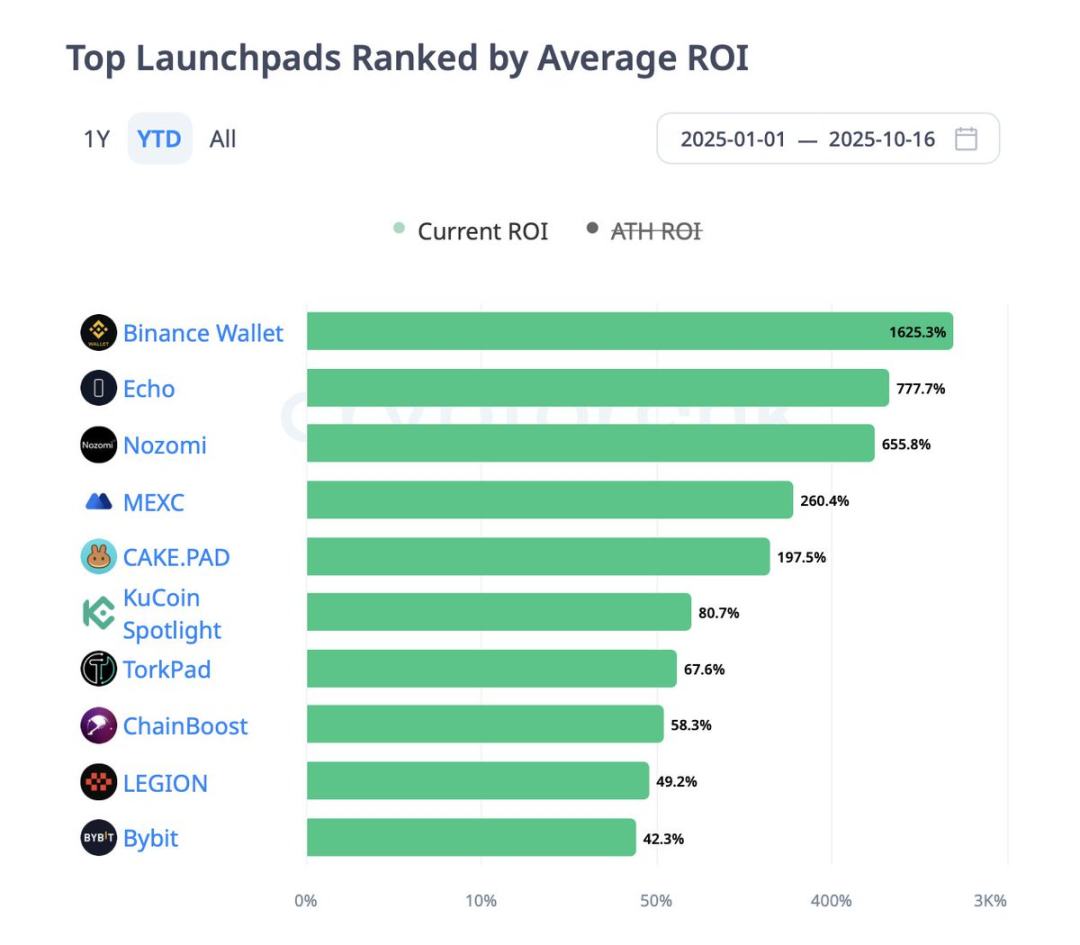
Each has tackled the pain points that plagued the first wave of token sales, collectively building a more structured, transparent, and investment-worthy environment. Let's analyze them one by one.
Echo: Self-Custody, Switchable Compliance, Surging Popularity
Founded by Cobie, Echo has become one of the breakthrough token launch infrastructures of 2025 with its self-custody public sale tool, Sonar. Unlike centralized launchpads or exchange IEOs, Echo provides infrastructure rather than a trading market. Project teams can choose their own sale formats (fixed price, auction, or treasury/credit mode), set KYC/qualified investor certification/geographical restriction rules via Echo Passport, distribute sale links themselves, and launch on multiple chains such as Solana, Base, Hyperliquid, and Cardano.
The platform has grown rapidly:

Echo's most notable case is Plasma. In July this year, the project used a time-weighted treasury model to sell 10% of its tokens at $0.05, attracting over $50 million in committed funds. Plasma's historical highest ROI reached 33.78x, making it one of the best-performing projects of the year. LAB followed closely, with a 6.22x ROI at listing.
Here is an overview of Echo's recent sale projects:
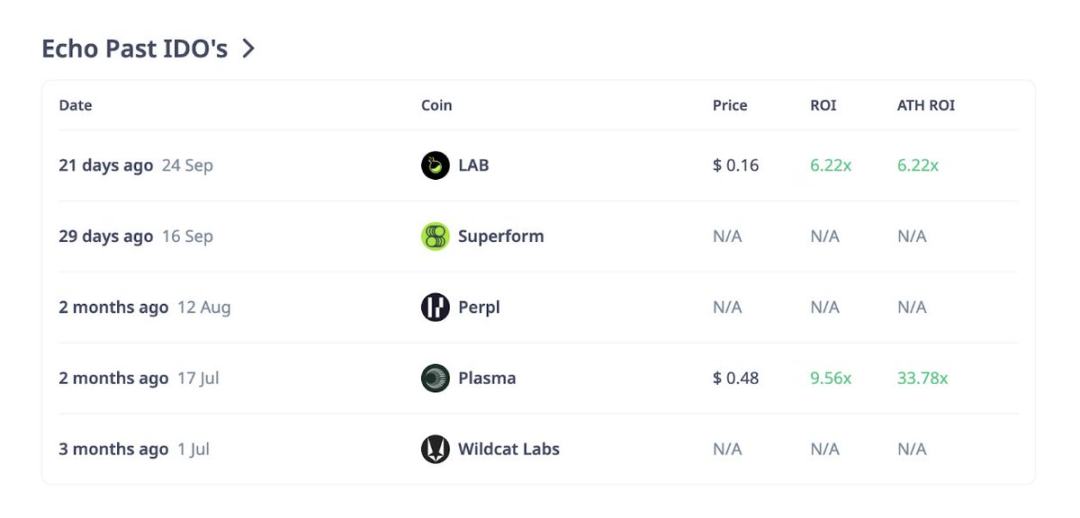
These figures reflect both the potential for returns and the variability of those returns. While Plasma and LAB delivered high multiples, other projects like Superform and Perpl have yet to be listed or report results. It is important to note that Echo does not enforce a post-sale liquidity framework; liquidity pool injections, market maker requirements, and unlock schedules are all determined by the issuer, not standardized by the platform.
Investor note: Echo's flexibility makes it the highest-yielding launch infrastructure this cycle, but it also requires investors to do their due diligence. Be sure to confirm these three points:
-
Compliance switch settings (KYC/qualified investor rules);
-
Sale format (treasury, auction, or fixed price);
-
Issuer's liquidity plan (Echo does not standardize this).
Legion and Kraken Launch: Combining Reputation and Regulation
If Echo represents issuer-led flexibility, Legion is the complete opposite; it is a structured, reputation-based public sale channel.
In September this year, Kraken Launch officially went live, fully powered by Legion's underlying technology. This is the first time token sales are conducted directly within Kraken accounts, following MiCA compliance requirements, with participant priority determined by reputation scores.
The platform is growing rapidly:

At the core of Legion is the Legion Score—a 0-1000 reputation metric calculated from on-chain activity, technical contributions (such as GitHub commits), social interactions, and endorsements from others.
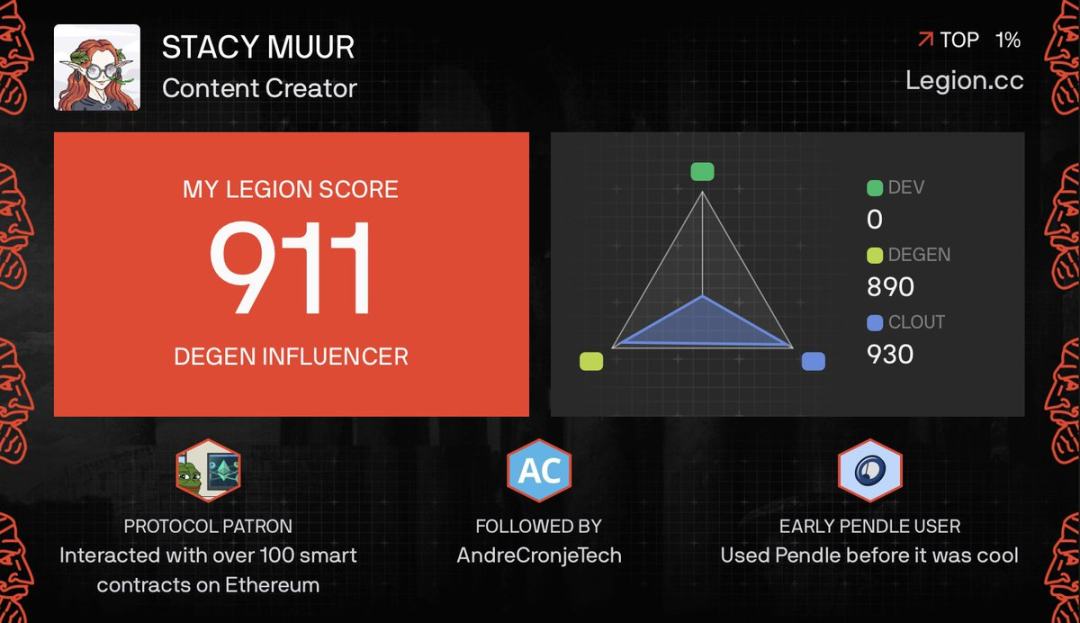
Project teams can reserve a certain percentage of token allocations (usually 20%-40%) for high-score users, with the remaining allocations open to first-come, first-served or lottery rounds. This completely overturns the traditional allocation model: instead of rewarding the fastest bots, it rewards developers, contributors, and influential community members.
Here is an overview of Legion's recent sale projects:
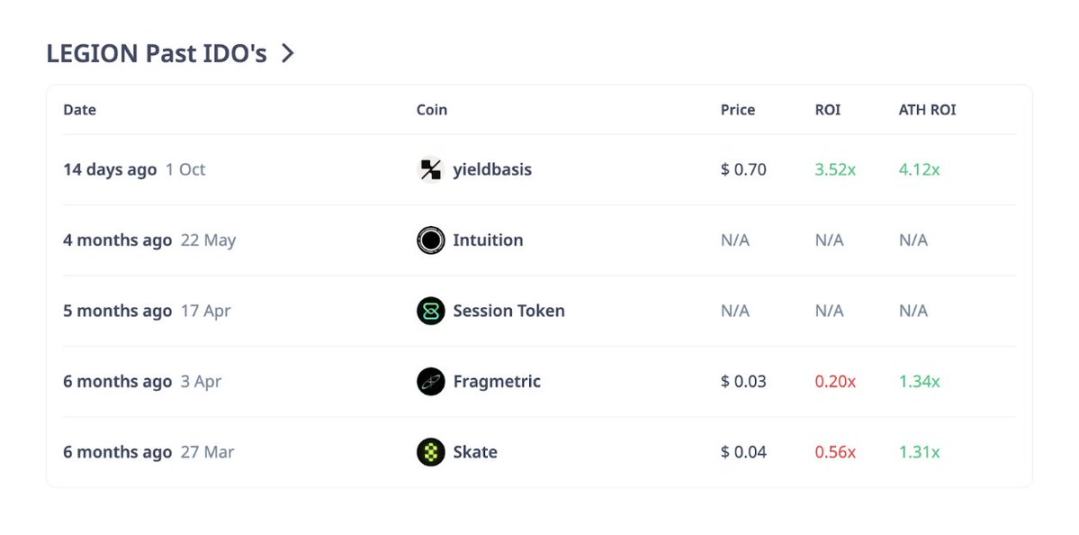
Kraken's integration adds another layer of protection: exchange-level KYC/AML checks and first-day liquidity. This is equivalent to an IPO-style launch combined with a community allocation mechanism. Early cases such as YieldBasis and Bitcoin Hyper saw significant oversubscription in the privileged phase (for high-score users), while low-score users were directed to public sale rounds with limited allocations.
Of course, it is not perfect. Some early users pointed out that the Legion Score may overemphasize social influence—large X platform account holders may rank higher than true developers, and the transparency of the scoring weight system needs improvement. But compared to the chaos of past lotteries, this is a significant step forward.
Investor note: The Legion Score is crucial. If you want to get allocations in quality project sales, you need to build your on-chain record and contribution profile early. Also, be sure to check the allocation ratio between privileged and public sale rounds for each project, as this rule varies by project.
MetaDAO: Mechanism First, Marketing Second
MetaDAO is doing something no other launch infrastructure has tried before: encoding post-market policies directly into the protocol itself.
Here’s how it works: if a sale on MetaDAO is successful, all USDC raised is deposited into a market-managed treasury, and token minting rights are transferred to this treasury. The treasury injects 20% of the USDC, along with 5 million tokens, into a Solana DEX liquidity pool. At the same time, the treasury is set to "buy below price, sell above price," forming a soft price range around the anchor price from day one of the sale.
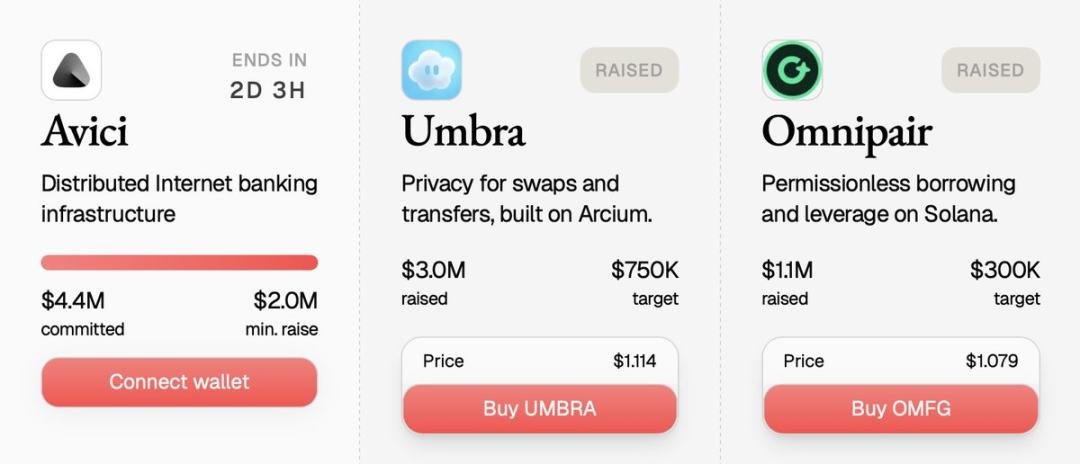
This seemingly simple mechanism completely changes early trading dynamics. Traditionally, if liquidity is insufficient or insiders dump, secondary market prices can plummet. With MetaDAO's price range mechanism, early prices usually fluctuate within a set range—downside is limited, and upside is also capped. This is a mechanism guarantee, not just a verbal promise. If there is no market demand at all, treasury funds will eventually be depleted, but it can guide market behavior on the crucial first day.
The most representative case is the Solana privacy protocol Umbra. Umbra's sale attracted over 10,000 participants, with committed funds reportedly exceeding $150 million. The sale page even displayed large allocation data in real time. Witnessing this transparent distribution firsthand feels like a glimpse into a more structured future—transparent, on-chain, and policy-controllable.
Investor note: When participating in MetaDAO sales, be sure to note the price and understand the price range rules. If you buy at a price slightly above the upper limit of the range, be aware that the treasury may become your counterparty (selling tokens) during the price rise; if you buy at a price slightly below the lower limit, the treasury may buy from you. MetaDAO rewards investors who understand the mechanism, not speculators chasing hype.
Buidlpad: Embracing Compliant Retail Investors
Buidlpad focuses on one simple yet powerful function: providing a clear community round participation path for compliant retail investors. Founded in 2024, the platform's core process is divided into two stages: first, users complete KYC registration and reservation; then, during the funding window, they submit their funding commitments. If the sale is oversubscribed, excess funds are refunded. Some sales also manage demand through tiered FDV, with lower FDV in early stages and higher FDV in later stages.

Buidlpad's milestone moment came in September this year with the Falcon Finance sale. The project aimed to raise $4 million but ultimately received $112.8 million in committed funds, an astonishing 28x oversubscription. The KYC phase was from September 16-19, the funding phase from the 22nd to 23rd, and refunds were completed by the 26th. The entire process was smooth, transparent, and entirely driven by retail investors.
Simplicity is Buidlpad's strength. It does not use complex scoring systems or predictive treasuries, but simply focuses on providing structured participation channels for communities that pass compliance checks. However, note that liquidity still depends entirely on the issuer's planning, and cross-chain dispersed sales can sometimes lead to fragmented post-sale trading volumes.
Investor note: Mark key dates. The KYC/reservation window is a hard threshold—miss it and you lose allocation eligibility. Also, read the tier structure carefully—early stages often allow entry at lower FDV.
Commonalities and Risks Across Platforms
Overall, these platforms exhibit several common features:
-
Oversubscription is common, but hype may not last. Falcon's 28x oversubscription, Plasma's hundreds of millions in attention, Umbra's huge demand—these headlines are dazzling. But without sustained use cases, high FDV often means early prices will fall after the post-sale halo fades.
-
Mechanisms determine volatility. MetaDAO's buy-sell range can indeed reduce chaos, but also limits upside near the sell range; Echo and Buidlpad rely entirely on issuer self-discipline; Legion relies on exchange listings for liquidity depth.
-
Reputation systems change allocation logic. With Legion, building a score early can mean the difference between a substantial allocation and scrambling in a restricted public sale pool.
-
Compliance screening is an advantage, not a flaw. KYC windows, qualified investor switches, privileged score screening—these mechanisms reduce chaos but also increase participation stratification.
Beneath these appearances, risks remain: scoring systems can be manipulated, treasuries can be mismanaged, whales can still dominate allocations through multiple wallets, and regulatory enforcement may lag behind marketing. These mechanisms are not panaceas; they simply change the market's game dynamics.
2025 Investor Guide
If you want to navigate the new wave wisely, you need to think structurally:
-
Understand the mechanism before succumbing to FOMO. Is it a fixed price or an auction? Is there a privileged phase or pure first-come, first-served? Is there a treasury price range or complete laissez-faire?
-
Mark eligibility windows. KYC/reservation deadlines, qualified investor requirements, geographic restrictions—miss one date and you could lose all allocations.
-
Understand the liquidity plan. Is it MetaDAO's encoded liquidity range? Kraken's exchange listing? Or issuer self-planning on Sonar? Liquidity determines early price trends.
-
Targeted participation. Participating in MetaDAO requires understanding price ranges, Legion requires early score accumulation, Buidlpad requires aiming for early stages.
-
Control your position size. Oversubscribed hot projects do not guarantee strong secondary market performance. Treat these investments as structured bets, not guaranteed moonshots.
Author's Thoughts
The return of 2025 is not about nostalgia, but about new infrastructure, new rules, and a more disciplined market. Platforms like Echo, Legion, MetaDAO, and Buidlpad each address some of the flaws of the 2017 model: some focus on compliance, some optimize allocations, some improve liquidity policies. Together, they are making public token sales less of a speculative frenzy and closer to a structured capital formation process.
For investors, this means the advantage is no longer just early entry, but understanding the mechanisms. Because in 2025, project launches are not disappearing—they are maturing.



